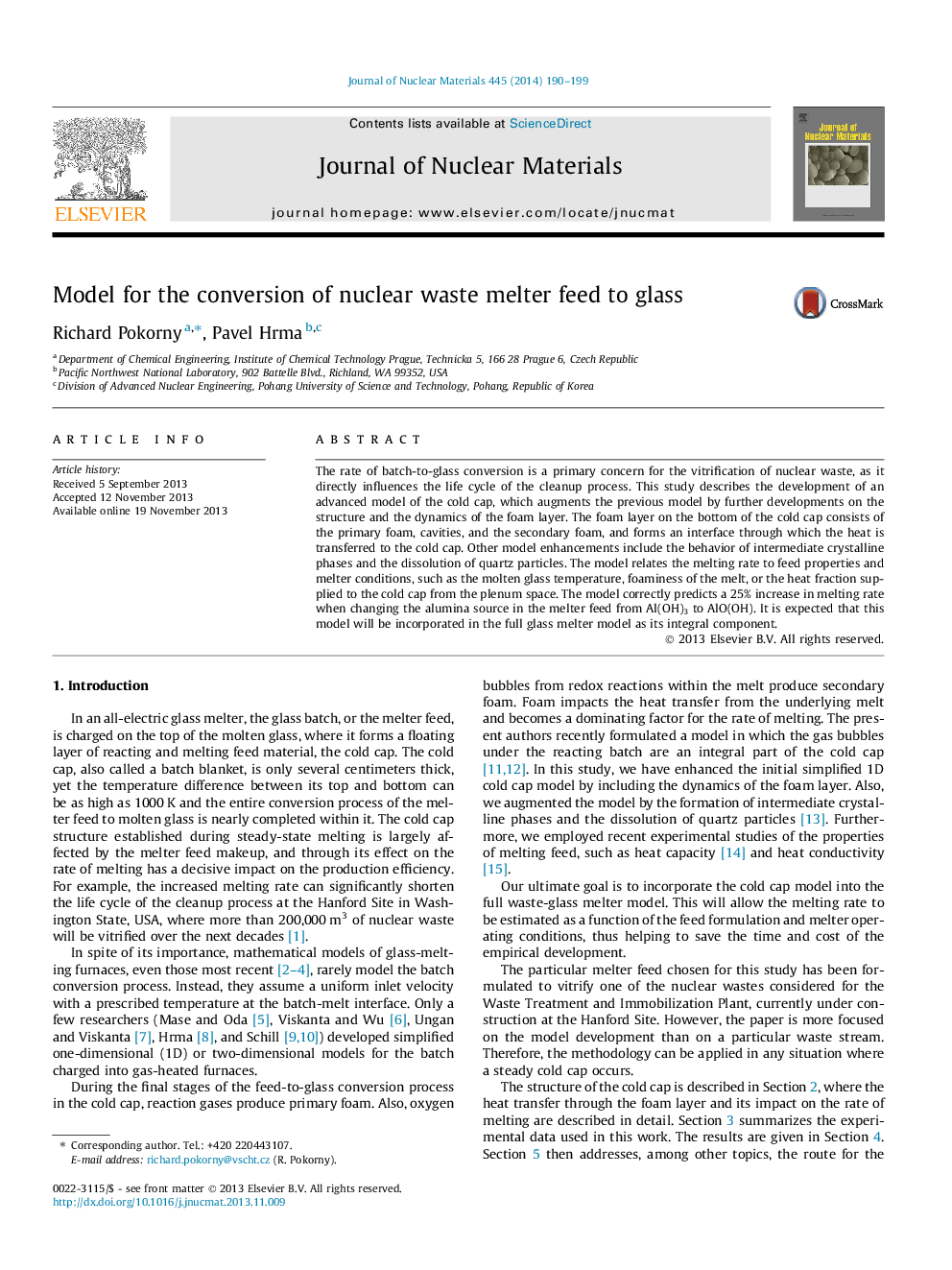| Article ID | Journal | Published Year | Pages | File Type |
|---|---|---|---|---|
| 7968344 | Journal of Nuclear Materials | 2014 | 10 Pages |
Abstract
The rate of batch-to-glass conversion is a primary concern for the vitrification of nuclear waste, as it directly influences the life cycle of the cleanup process. This study describes the development of an advanced model of the cold cap, which augments the previous model by further developments on the structure and the dynamics of the foam layer. The foam layer on the bottom of the cold cap consists of the primary foam, cavities, and the secondary foam, and forms an interface through which the heat is transferred to the cold cap. Other model enhancements include the behavior of intermediate crystalline phases and the dissolution of quartz particles. The model relates the melting rate to feed properties and melter conditions, such as the molten glass temperature, foaminess of the melt, or the heat fraction supplied to the cold cap from the plenum space. The model correctly predicts a 25% increase in melting rate when changing the alumina source in the melter feed from Al(OH)3 to AlO(OH). It is expected that this model will be incorporated in the full glass melter model as its integral component.
Related Topics
Physical Sciences and Engineering
Energy
Nuclear Energy and Engineering
Authors
Richard Pokorny, Pavel Hrma,
